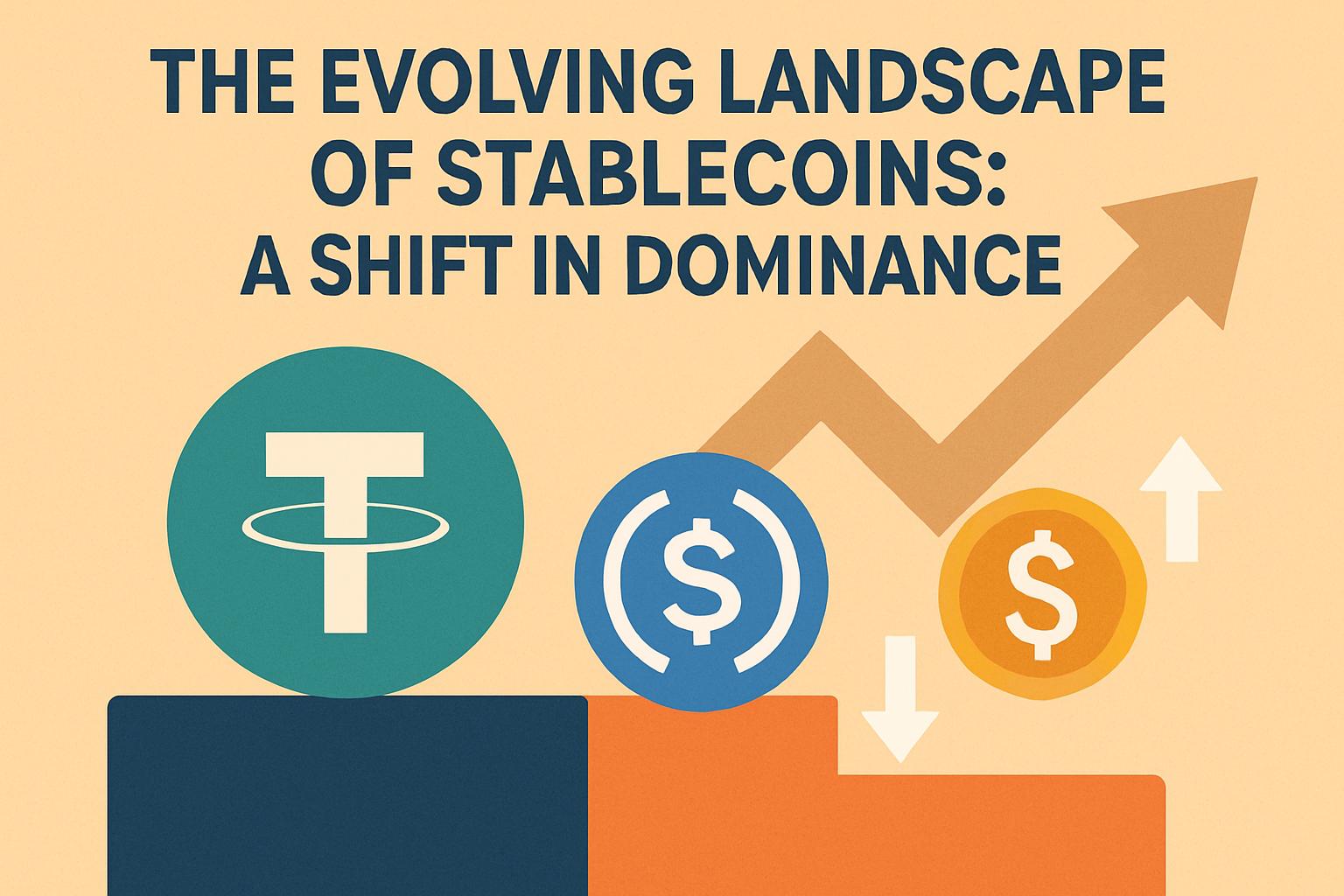For years, Tether (USDT) and Circle (USDC) have reigned supreme, holding much of the stablecoin market in a tight grip. But Nic Carter of Castle Island Ventures highlights a tectonic shift underway, as emerging stablecoins begin to chip away at this duopoly. Influenced by new financial tech platforms, exchanges minting their own coins, and the entrance of traditional banks, the previously unchallenged dominance of these giants is now under siege.
A Decline from the Pinnacle
Tether and Circle had previously commanded an overwhelming market share, peaking at 91.6% combined in March 2024. However, this stronghold has weakened, with their combined share slipping to approximately 83%. While past challengers like Terra’s UST and Binance’s BUSD briefly threatened, they fell to regulatory pressures or internal collapse. Today, a new breed of stablecoins, equipped with yield mechanisms and integrated ecosystems, are vigorously contesting this space.
The Rise of Independent Issuance
The most significant structural change is the trend of intermediary institutions independently issuing stablecoins. Where once companies relied on third parties like Paxos, today’s issuance costs have significantly decreased, prompting exchanges, wallets, DeFi protocols, and fintech firms to launch their own blockchain solutions and stablecoins. This shift empowers these entities to control reserves and user flows, exemplified by Phantom Wallet’s launch of Phantom Cash and Hyperliquid’s move to break free from USDC reliance with USDH.
Competitive Yield Sharing
Another driving force of market fragmentation is the yield-sharing model. Historically, Tether has not shared interest with users or platforms, while Circle has limited such arrangements to Coinbase. In stark contrast, emerging players like Ethena USDe and Agora AUSD position yield sharing as a central strategy, rewarding token holders and partners alike. Although direct stablecoin interest payments face regulatory hurdles, profit-sharing through intermediaries remains viable, igniting fierce competition to offer higher returns and attract users.
Banking Giants Enter the Arena
Perhaps the most potentially transformative development is the entrance of banks. Following relaxed regulations, banks can now issue stablecoins backed by 100% high-quality liquid assets (HQLA), with the assurance of transparency and 1:1 conversions. Despite not being usable for loans, these stablecoins promise revenue through fees and payment integrations. Financial titans like JPMorgan and Citigroup are reportedly discussing collaborations, banking on their scale to redefine the market dynamics.
A Multipolar Future
Previously, the network effect was expected to consolidate the market around a few stablecoin giants. However, with improved cross-chain exchanges and declining friction costs, allegiance to specific brands is waning. As fintech platforms continue to support a variety of stablecoins, the market is transitioning into a ‘commoditized and multipolar’ phase. Carter argues this heralds a new era where exchanges, DeFi, startups, and banks contribute to a diverse competitive landscape.
The stability once enjoyed by USDT and USDC is waning in the face of these dynamic shifts, paving the way for an era where innovation and competition reshape the stablecoin market.

![[News] Bitcoin at a Turning Point? 10x Research Signals a Bullish Macro Shift Ahead](https://cryptoexplores.com/wp-content/uploads/2025/06/new20250616.jpg)
![[News] Binance Lists $HOME, the Gas-Free, Bridge-Free All-in-One DeFi App](https://cryptoexplores.com/wp-content/uploads/2025/06/news20250617.jpg)